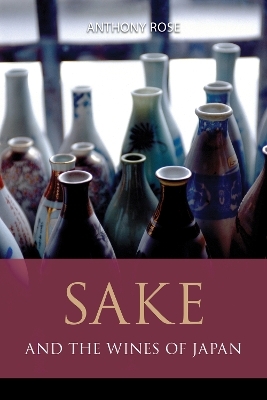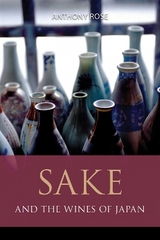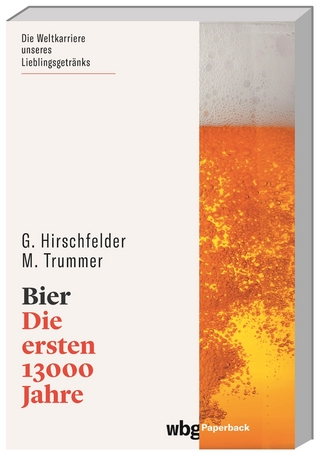
Sake and the wines of Japan
Seiten
2018
Infinite Ideas Limited (Verlag)
978-1-906821-62-3 (ISBN)
Infinite Ideas Limited (Verlag)
978-1-906821-62-3 (ISBN)
- Titel erscheint in neuer Auflage
- Artikel merken
Zu diesem Artikel existiert eine Nachauflage
Sake, Japanese rice wine, can be confusing to the wine scholar. Anthony Rose's new book brings clarity to the subject with explanations of the history, cultural significance, brewing methods and industry structure. A thorough analysis of the wine's signature flavours follows along with detailed profiles of the most important producers.
Welcome
to the 'new sake'. Until recently it had seemed that the industry was in
decline but now the market for premium sake has seen sales flourish both within
Japan and worldwide.
Many misconceptions surround Japan's national
drink, from how it is brewed to the relative merits of ginjo, junmai and nama types and from the ideal serving
temperature to its ageing potential. Anthony Rose's new book aims to bring
clarity to the confusion surrounding this fascinating wine.
Beginning with sake's long history, Rose takes
us on a journey across the centuries to explain how the industry evolved. Sake
has been brewed in Japan for more than 2000 years, though the process only
really took off during the Edo period (in Western terms, between the seventeenth
and nineteenth centuries). The wine's long history also makes it culturally
important and no study of sake would be complete without an exploration of its
role in ceremony and religion, and the myths, legends and stories that surround
it.
Rose begins his technical notes on sake with
an explanation of the different grades of sake. Labelling rules and regulations
are given due consideration in order to enable readers to understand the labels
on their bottles before the discussion moves on to an analysis of sake's
flavours.
The production process and the structure of an
industry that includes 1200 breweries across 47 prefectures, from the small and
artisan to major commercial concerns, are covered in detail. The part played by
climate and geography in sake's flavours is explored along with an
investigation into the differences imparted by the water, rice, yeast and koji (fermentation mould) used.
Rose
devotes an entire section to profiling the most important breweries across the
main sake-producing regions and also includes details on the more recently
emerged non-Japanese producers. With thorough appendices for those who want to
delve further into the statistics this is an essential addition to the library
of the serious wine enthusiast or student.
Welcome
to the 'new sake'. Until recently it had seemed that the industry was in
decline but now the market for premium sake has seen sales flourish both within
Japan and worldwide.
Many misconceptions surround Japan's national
drink, from how it is brewed to the relative merits of ginjo, junmai and nama types and from the ideal serving
temperature to its ageing potential. Anthony Rose's new book aims to bring
clarity to the confusion surrounding this fascinating wine.
Beginning with sake's long history, Rose takes
us on a journey across the centuries to explain how the industry evolved. Sake
has been brewed in Japan for more than 2000 years, though the process only
really took off during the Edo period (in Western terms, between the seventeenth
and nineteenth centuries). The wine's long history also makes it culturally
important and no study of sake would be complete without an exploration of its
role in ceremony and religion, and the myths, legends and stories that surround
it.
Rose begins his technical notes on sake with
an explanation of the different grades of sake. Labelling rules and regulations
are given due consideration in order to enable readers to understand the labels
on their bottles before the discussion moves on to an analysis of sake's
flavours.
The production process and the structure of an
industry that includes 1200 breweries across 47 prefectures, from the small and
artisan to major commercial concerns, are covered in detail. The part played by
climate and geography in sake's flavours is explored along with an
investigation into the differences imparted by the water, rice, yeast and koji (fermentation mould) used.
Rose
devotes an entire section to profiling the most important breweries across the
main sake-producing regions and also includes details on the more recently
emerged non-Japanese producers. With thorough appendices for those who want to
delve further into the statistics this is an essential addition to the library
of the serious wine enthusiast or student.
Award-winning wine and sake critic Anthony Rose writes for Decanter, The World of Fine Wine, Financial Times How to Spend It online and The Oxford Companion to Wine. He is co-chair of the Australia panel at the Decanter World Wine Awards and the Sake International Challenge in Tokyo and teaches a sake consumer course at Sake No Hana in London. A founder of The Wine Gang (www.thewinegang.com), he was the wine correspondent of the print version of the Independent from start to finish (1986-2016).
| Erscheinungsdatum | 30.10.2018 |
|---|---|
| Reihe/Serie | The Infinite Ideas Classic Wine Library |
| Verlagsort | Durrington |
| Sprache | englisch |
| Maße | 156 x 234 mm |
| Gewicht | 500 g |
| Themenwelt | Sachbuch/Ratgeber ► Essen / Trinken ► Getränke |
| ISBN-10 | 1-906821-62-3 / 1906821623 |
| ISBN-13 | 978-1-906821-62-3 / 9781906821623 |
| Zustand | Neuware |
| Informationen gemäß Produktsicherheitsverordnung (GPSR) | |
| Haben Sie eine Frage zum Produkt? |
Mehr entdecken
aus dem Bereich
aus dem Bereich
das Praxis-Handbuch für Kaffeeliebhaber, Baristas und Espresso-Fans
Buch | Hardcover (2023)
Edel Verlagsgruppe
24,99 €



